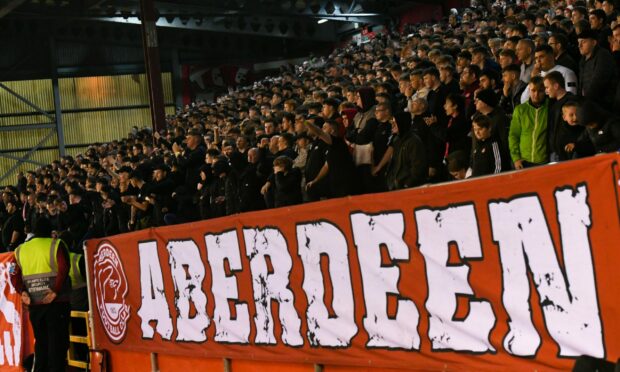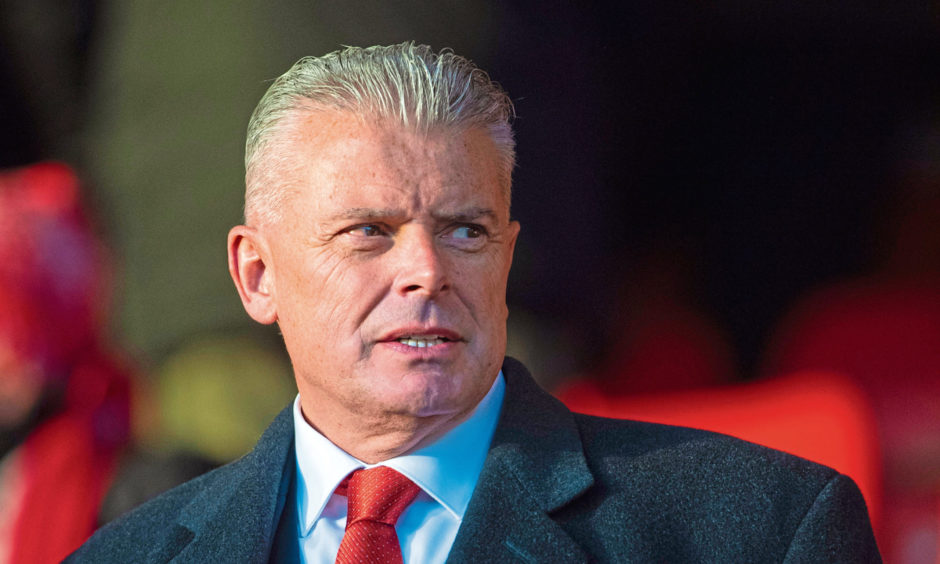The case for changing the kick-off of some football games in Scotland away from the traditional Saturday 3pm kick-off is becoming a compelling one.
Aberdeen and Dundee United’s joint decision to switch their home games against each other from 3pm to 6pm on Saturdays has to be considered a success.
The numbers don’t lie with United’s home game against the Dons helping them record their second-highest attendance of the season to date at Tannadice.
In total, 11,010 watched the Tangerines beat the Dons 4-0 last month, a tally bettered only by their home game against Celtic which attracted 77 more fans.
The story is the same at Pittodrie where Aberdeen’s fixture against United drew a season-best 17,035 fans on Saturday.
It should be noted the excellent turnout also came despite the game being offered as a pay-per-view option on the club website.
The game on Saturday eclipsed the 16,479 who turned out to watch the Dons to beat Hibs on Friday November 4.
Fans have responded strongly to new kick-off times
It is clear there is an appetite for something different from the traditional 3pm kick-off. Saturday or Sunday kick-offs due to a visit from Celtic or Rangers in front of the television cameras do not always have a positive impact on attendance in Scotland.
But Friday night or Saturday night football seems to be proving a ratings winner – and not just for games between the Dons and United.
Hibernian fans packed out Easter Road last month with their highest home attendance in almost 34 years for a Friday night game against St Johnstone.
Hibs sold out their entire 19,500 home allocation to ensure they were watched by the biggest home support since January 1989 when 27,219 turned out to watch the Hibees in the Edinburgh derby against Hearts.
The 20,010 total figure for the visit of Perth Saints is the second best turnout for a game at Easter Road so far this season, better than 18,245 crowd for when Rangers came to town in August and a tally beaten only by the first Edinburgh derby which attracted 20,179.
So, what can be gleaned from these figures?
Afternoon may no longer be convenient
For starters, it may be the case 3pm on a Saturday is no longer convenient for the masses.
It is hard to put a figure on how many players, fans volunteers and parents find their time taken up by local juvenile, schools, amateur or junior football every Saturday in and around Aberdeen alone.
But in total it would certainly be a significant four-figure involvement in some capacity and no doubt the Dons will be doing their homework to find out where those additional bums on seats are coming from.
Dons chairman Dave Cormack is all for daring to be different and both Friday and Saturday night football has been a ratings winner for his club so far this season.
You can be sure he will be only too happy to share that information with his fellow chairmen in the Scottish Premiership during the World Cup break too.
Friday or Saturday night games might not suit every club in the league but the early indications are that it would be worth investigating the possibility of further changes to the fixture lists for when action resumes in December.


Conversation